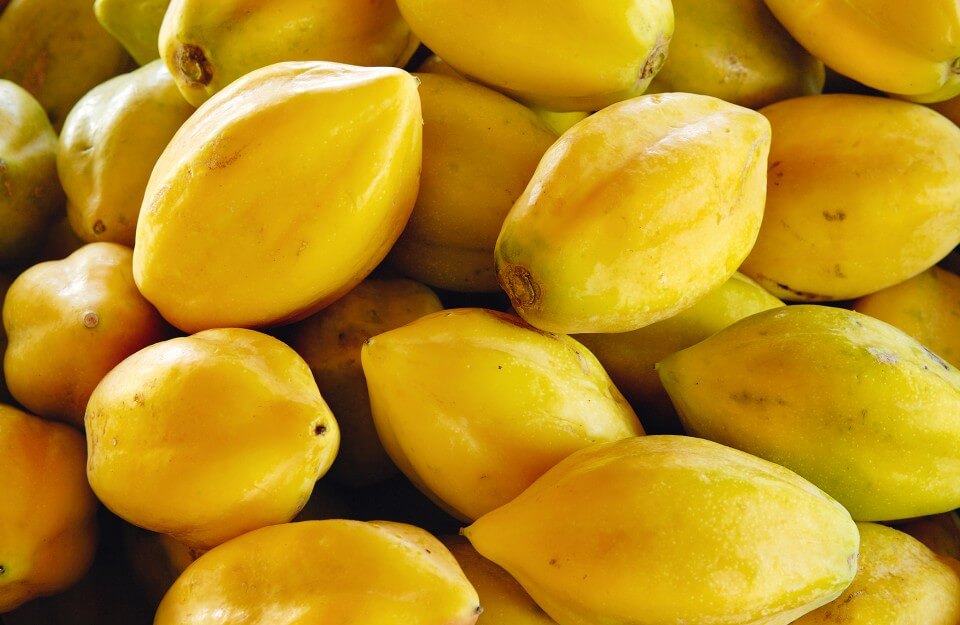
Chile, with its diverse geography and rich cultural tradition, is a country known for its wide variety of exceptional fruits. These not only stand out for their unique and exquisite flavors, but also for their health benefits and their importance in the daily lives of Chile's inhabitants.
Maqui
Maqui is a small shrub with abundant branches, small white flowers and very small, sweet, dark, almost black berries.
It is a fruit native to southern Chile, where the Mapuches used it as a food supplement and to prepare "chicha", an alcoholic beverage. It also has healing properties, as it is healing, anti-inflammatory, antispasmodic and is one of the most powerful antioxidants known.
In fact, many companies in Chile and other countries have taken notice of the innumerable beneficial properties of maqui, even calling it the "super fruit" or "superberry". In Chile it grows naturally, so it is possible to find it in fairs in the south of the country in its natural form or as jam.
Custard apple
The cherimoya is native to the Andes, it was catalogued by Mark Twain as "the most delicious fruit known to man". In Chile it can be found fresh throughout the center of the country, mainly in the regions of Coquimbo and Valparaiso. Therefore, if you want to taste the best cherimoyas you should go to fairs and markets in cities like La Serena or Quillota.
The plant belongs to the annonaceae family, and its fruit has a round shape and green skin. Its content is a white, creamy, soft and sweet pulp. In some places it is known as "custard apple", because of its similarity to the apple but with a fleshier pulp. A very traditional way to eat it in Chile is with orange juice, contrasting the sweetness of the fruit with the acidity and freshness of the citrus juice. This combination is called "chirimoya alegre".
Rosehip
The rosehip corresponds to a shrub found in the wild in Chile. Its fruits are oval in shape and have a bright orange color. In addition, it sometimes gives rise to dried fruits called achenes, which are more reddish in color. Currently, the powerful oil contained in its seeds is used to make all kinds of cosmetic and health products.
Its attributes are multiple; it is even possible to use it in jams and all kinds of foodstuffs. For this reason, it is currently marketed in a wide variety of products, from herbal teas to skin creams.
Rosehips are mainly found in the Bío Bío region of Chile and represent great export potential. Data from Business Chile indicate that the nation has 85% of the international supply of rosehips. The most common way to savor it is in a jam, since the exotic fruit itself is somewhat dry and hard, but its juice is exquisite as well as very healthy.
Papaya
The papayaAlthough it is also found in other regions of the world, this yellow fruit with a texture similar to melon has a special flavor in the city of La Serena, in the region of Coquimbo.
This city in northern Chile offers a wide variety of products made from the fruit: from juice and syrup, to alcohol and candied fruit. The papaya has a thin shell and inside it has a very sweet flavor and a very pleasant aroma, so it is used to make ice cream, syrups, honey, nectar, candies and liquor.
In addition, it has excellent healing properties, since it is used for the treatment of intestinal disorders such as ulcers or colon problems.
On the other hand, the importance of papaya has to do with the enzyme it contains. The so-called "papain" is the best catalyst for the digestion of proteins.
Chilean strawberry or white strawberry
The Chilean strawberry or white strawberry is a native and pale version of the traditional strawberry, but no less sweet. In fact, some call it "pineapple strawberry" because of its taste similar to the tropical fruit. The first people to try this type of berry were the Mapuche and Picunche peoples of central and southern Chile.
The first European to taste it was the Jesuit chronicler Alonso de Ovalle, who found these exotic fruits in the middle of a field in the south of the country and called them fragaria chiloensis, which means Chilean strawberry.
It is a very juicy and aromatic strawberry, which is currently cultivated from western North America to the southernmost areas of Chile and Argentina. There are red, yellow or white varieties.




